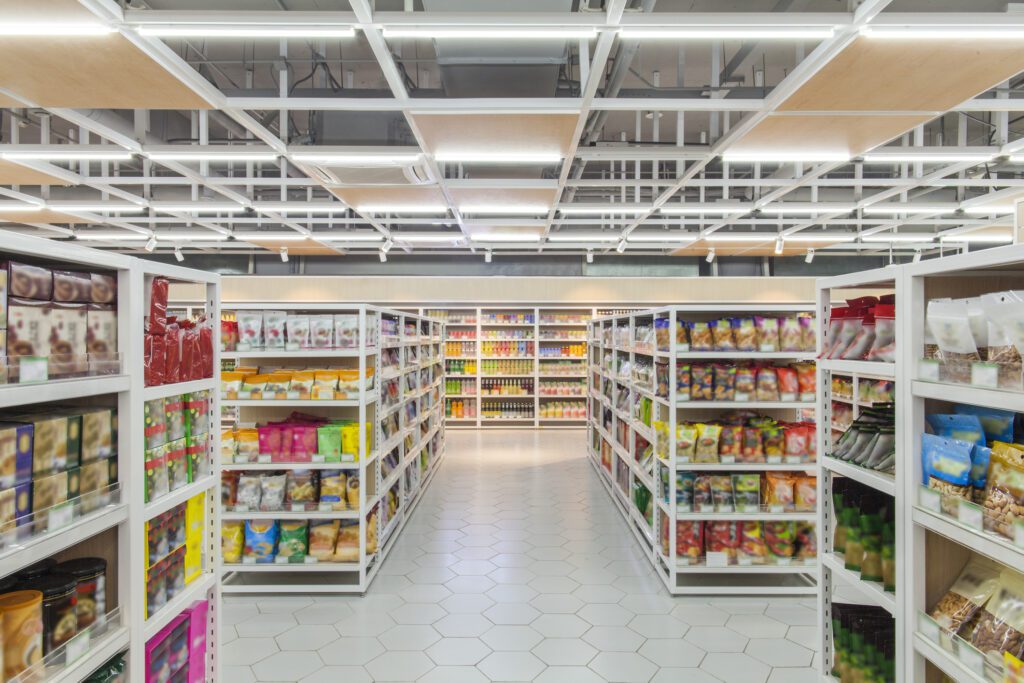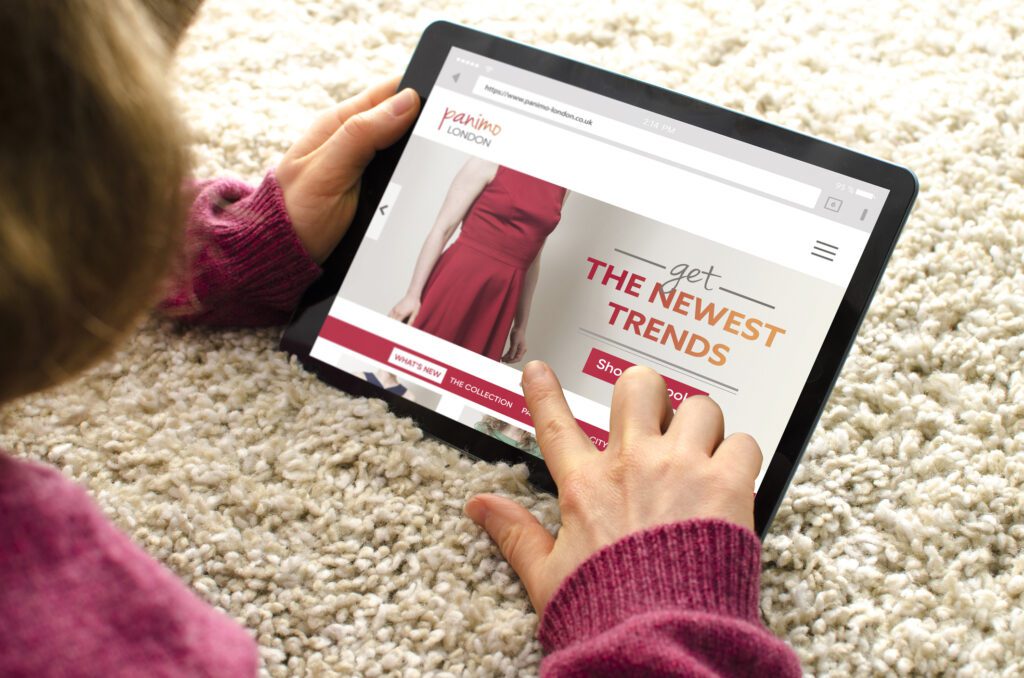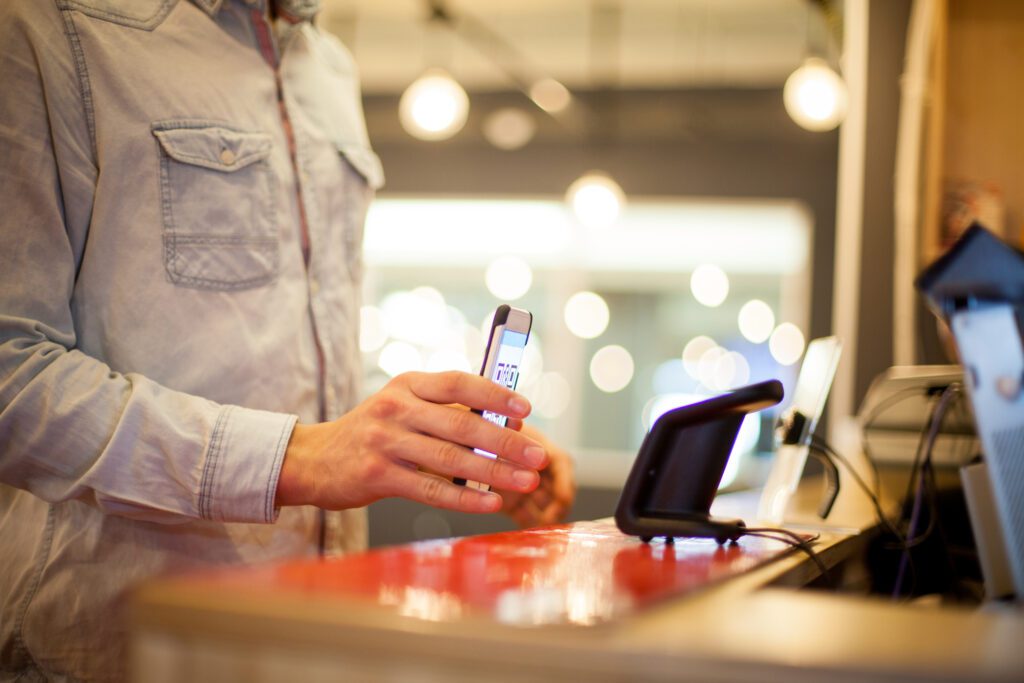 Even coming into 2020, shopper marketing was in flux. Brands and retailers had already started augmenting in-store tactics such as endcaps, shelf talkers, and sampling with mobile and online tools and strategies. Nonetheless, Shaun Brown, Momentum’s SVP, North America shopper practice and discipline lead, estimates that 80 percent of the focus and spend had been on the in-store experience and 20 percent on digital.
Even coming into 2020, shopper marketing was in flux. Brands and retailers had already started augmenting in-store tactics such as endcaps, shelf talkers, and sampling with mobile and online tools and strategies. Nonetheless, Shaun Brown, Momentum’s SVP, North America shopper practice and discipline lead, estimates that 80 percent of the focus and spend had been on the in-store experience and 20 percent on digital.
Then COVID-19 erupted, putting a temporary halt to most brick-and-mortar retail and transforming it permanently going forward. During the second quarter of 2020, Momentum reports that 84 percent of consumers had moved to online shopping. What’s more, 37 percent of shoppers were having their groceries delivered to them—500 times what had been projected, Brown says.
Now, as consumers and retailers adjust to the new normal, a significant portion of those shoppers are returning to stores or looking forward to doing so. Momentum’s research shows that just 12 percent of shoppers who started using grocery delivery services in response to the pandemic planned to continue. In fact, grocery stores and supermarkets topped the list of public spaces consumers felt most comfortable returning to, cited by 78 percent of those surveyed. Parks were second (73 percent) and home-improvement stores third (68 percent). More than three-quarters of shoppers (79 percent) missed the tangibility of the in-person experience; even more (83 percent) missed the social aspect.
That said, digital channels will continue to be an important aspect of shopping—and shopper marketing—going forward. McKinsey & Company estimates that the number of consumers purchasing groceries online at least some of the time will have grown 41 percent post-COVID-19, with 38 percent more buying at least some household supplies and personal products online.
This increase in digital shopping presents an opportunity to reach and convert new audiences, just as the product shortages that occurred during the early weeks of the pandemic did. “People have been getting exposed to and getting experience with brands that are new to them because their usual brands were sold out,” says Colby Graff, GM, strategy and digital for Propac Agency. “Now is the opportunity for brands to bring joy and support to customers. The more value brands can deliver for them—not just monetary but also emotional—the better.”
To maximize that opportunity, brands and retailers should be channel-agnostic and home in on what most agree is the heart of shopper marketing: using data about shoppers’ behaviors and mindset to instigate changes in those behaviors. “Consumer advertising is about driving demand,” says Rich Butwinick, founder and president of Marketing Lab. “Shopper marketing is about driving conversion”—regardless of channel.
The Twin Tenets of Shopper Marketing 2.0: Convenience and Value
Until recently, convenience often came at the expense of value, and vice versa. Consumers had to pay extra for expedited delivery, for instance. But “the pandemic didn’t just cause a spike in the demand for immediacy,” says Lisa Norat, SVP, business leadership at HMT Associates. “It accelerated a need for convenience that shoppers will expect and demand forever.”
At the same time, the ensuing economic downturn has led consumers to seek out greater value to justify their purchases. “People are starting to be very mindful of spending, and that’s going to impact what is considered essential vs. what is considered a luxury,” notes Propac Agency’s Colby. “It comes down to the brands to communicate why their brand is essential.”
Delivering Convenience
Many consumers used to consider home delivery of groceries and other essentials a luxury. COVID-19, however, has made it a necessity—or at the very least, a necessary option for retailers to offer.
From February to mid-March alone, downloads of the Instacart app increased 218 percent, according to Statista. Target’s 2017 purchase of Instacart-rival Shipt now seems especially prescient. Not only does the retailer control the delivery platform, but it also owns the valuable consumer data. “The third-party delivery platforms such as Grizly and Instacart are collecting a ton of data,” says Marketing Lab’s Butwinick. “Who owns the customer could really be up for grabs.” He anticipates more retailers acquiring or developing their own delivery platforms.
Subscription boxes and auto refills/auto replenishment are other ways retailers and brands can deliver convenience. While subscriptions to non-essentials, such as beauty supplies and fashion, are expected to decline in response to the economic crunch, those to groceries, health and wellness items, and educational kids’ activities will likely hold steady, if not increase. Companies that promote these—such as Petco, which offers free delivery and rewards for those who opt for its Repeat Delivery—have managed to combine convenience and value.
Value Propositions
In a weak economy, price of course becomes more important in the buying decision. “People are more brand agnostic,” Graff says. “They’re more willing to buy store labels because the need is more critical than the want.”
Fortunately, slashing prices and offering ever-increasing discounts are not the only way to provide value that will convert shoppers into buyers. COVID-19 has brought cleanliness, safety and wellness to the forefront of many consumers’ minds; according to Ipsos, 62 percent of consumers would stop shopping from retailers that they felt were not adhering to health and safety best practices. Retailers that tout such practices, then, are promoting value without competing on price. So are CPG brands that highlight the high quality of their ingredients and materials: According to Momentum, 42 percent of shoppers surveyed during the pandemic said they chose a name-brand product over private label because “it uses better-quality ingredients,” making this the second most important factor. (“I trust the brand,” cited by 53 percent, was first.)
And regardless of the economy, there will always be consumers who prioritize intangibles, such as spending time with family. “This is an opportunity for CPG companies to come in and connect with consumers—offering recipes and suggestions for family movie night, for example,” says Graff, who sees storytelling as vital to communicating this type of value. “Brands sometimes think if they put a product on the shelf, shoppers will see it. But a store is a sea of brands, of products, so if you don’t have a true strong point of difference, you’re not going to win on that aisle. You have to come up with a program, you have to come up with the benefits. Endcaps, knockouts, they all help.”
Digital Messaging
Pre-COVID-19, the journey from online storytelling to in-store purchase could be fairly long, even with apps and mobile sites helping to bring digital storytelling into the store. Now that point of decision and point of transaction are both more likely to be digital than they had been, driving demand and driving conversion are more closely intertwined than ever. Social channels, blog posts, and digital recipes and service articles are just a click away from the point of purchase for an increasing number of consumers.
“If we can agree that shopper marketing’s impact is most effective within the context of shoppers making purchase decisions, and we can align on the fact that purchasing now occurs anywhere, anytime throughout the purchase journey and across any platform or device, then we can appreciate that shopper marketing initiatives are even more valuable today in reaching shoppers when they are most open to engaging in a branded dialogue,” Norat says. “This also highlights the importance of connected media to inform how and where to deliver a brand message to convert search into purchase.”
Five Essential Technologies for Retailers and Brands
* QR codes. Giants including Walmart along with smaller retailers such as Fairway use QR codes for contactless store checkout and pay-as-you-go. Nike stores use the codes to facilitate contactless pickup of items ordered online. EBay has tested shoppable storefront windows, where consumers can view products and then scan a QR code through the window to buy them. To boost in-store traffic post-COVID, Sephora placed QR codes on retail signage that shoppers could scan for a chance to win prizes. And of course myriad CPG brands use codes on their packages and advertisements to go into greater detail about ingredients, allergens, recipes and special offers than physical space allows.
* Augmented reality (AR). QR codes can also help deliver an AR experience. This could enhance a shoppable-storefront experience, enabling consumers to see how a dress hangs on a runway model or zoom in on product details. Ikea’s Place app is perhaps the best-known example of a brand using AR to improve the at-home shopping experience and, in turn, boost conversion and decrease returns: It lets users virtually place products in their homes to get a true sense of scale and see how well they’ll work with existing decor.
* Connected packaging. QR codes on boxes or labels that deliver AR or other types of value-added content are a type of connected packaging. NFC and RFID are other technologies that enable connected packaging—and can also provide the brand with data it can use to tailor marketing messages. For instance, when Kraft Singles introduced NFC packaging with retail partner Walmart in 2019, consumers who tapped the packages while in the store received recipes and a coupon; after they’d bought the product, they could unlock an entry to an instant-win contest.
* Digital shopping lists. Apps that minimize the amount of time spent in grocery stores or that simplify online ordering will only become more popular. Just about every major grocery retailer has an app that allows users to create, save and share lists as well as to apply digital coupons and arrange for pickup. The best retailer apps, as well as those from third parties that allow users to shop from multiple stores, include links between recipes and ingredients; some third-party digital list services also enable price comparisons and remind users when they might be running low on items. And in July 2020, Walmart, Yahoo Mail and Verizon Media partnered to create Groceries from Walmart, allowing users to shop for and purchase groceries direct from their email inbox. For CPG brands, ads in and sponsorships with these aids are the digital equivalent of shelf talkers and endcaps.
* Personalization. Website product recommendations based on consumer data and previous purchases are nothing new, but they’re gaining importance as a substitute for in-store assistance. Also gaining traction as a way of minimizing friction are online dynamic merchandising tools that use customer data and algorithms to serve personalized products and offers to visitors upon their arrival to a website. Retailers and brands can use this same data to personalize marketing emails, push notifications and other communications. Pampers, for one, offers a number of personalized tools on its website—a pregnancy calendar, due-date and weight-gain calculators—to gain useful consumer data while forming a relationship with users. Chatbots are another way to provide personalized service. While online retailers are increasing their adoption of the technology, most CPG brands have yet to do so, though Clairol is a notable exception. (Given the popularity of Butterball’s Turkey Talk-Line in November and December, not having an online chat function seems a miss.)
Best Practices of Shopper Marketing 2.0
* Promote multiple delivery options. The thinking used to be, “Make sure consumers can shop by whichever channel they want.” Now retailers need to add to that, “Be sure they can receive their orders by whichever method they want” including home delivery and curbside or in-store pickup. As well as communicating these options early in the funnel, retailers and brands need to be transparent and proactive about any snafus, delays or out-of-stocks.
* Allow shoppers to make it personal. Letting consumers choose how they want to receive their purchases is one way of offering personalization. Another is enabling them to customize their purchases. People might be more willing to order produce online if they can specify what color they want the bananas or how soft they want the tomatoes.
* Use data and digital technology to take advantage of physical proximity. “Proximity’s going to be a big deal,” says Momentum’s Brown. “If consumers are in a store or near a store, use push notifications or digital-connect shelves to deliver custom content.” Beyond prices and promotions, this content can highlight the unique selling propositions of brands or products.
* Spotlight newness. People grew bored during the weeks of sheltering in place, and even now most consumers are still limited in terms of diversionary options. Take inspiration from Oreo, which excels at regularly creating excitement about its brand by introducing new, unexpected flavors.
* Use content to differentiate your brand. Telling shoppers that your chips use potatoes grown by family-owned farms is one thing; printing codes on your packaging that enable consumers to learn more about the farm where the potatoes for their specific bag of chips, as Kettle Brand does, is another. The beauty of digital marketing is its variety of content options, from YouTube videos showing the pristine conditions of a company’s facilities to Instagram posts where influencers can show off products. And whereas print, broadcast and in-store assets require a significant lead time to produce, most digital assets can be turned around in a flash to respond to market changes.
* Make agility a priority. PepsiCo unveiled two D2C websites, PantryShop.com and Snack.com, just 30 days after conceiving of them. “We used to plan a year in advance,” says Brown. “Now the marketplace changes weekly. You have to be as digitally agile as possible.”
* Continue investing in shopper research and consumer data. “Now is the time to invest in shopper research in order to reveal and understand those changes and the behaviors that will have a long-term impact on the purchasing dynamics around your brand,” says Norat of HMT Associates.







 Network
Network

